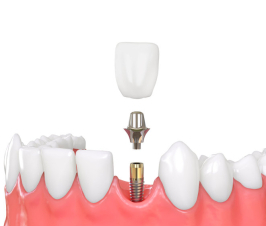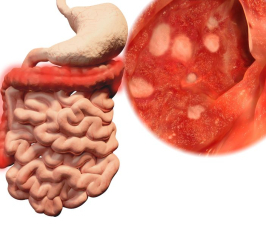 Vaginal infections are a nuisance, leaving most women annoyed and going to the nearest drug store for an over-the-counter treatment. It’s easy to women to self-prescribe when there are multiple applications available for yeast infections, with the most recent being the “one-time pill,” fluconazole.
Vaginal infections are a nuisance, leaving most women annoyed and going to the nearest drug store for an over-the-counter treatment. It’s easy to women to self-prescribe when there are multiple applications available for yeast infections, with the most recent being the “one-time pill,” fluconazole.
Thinking you have a yeast infection because of new vaginal itching, irritation, possibly odour, and discharge, could be misleading. We’ve become so accustomed to these quick fixes for vaginal infections that we use them without being properly assessed. In reality, these symptoms may not be a yeast infection at all, but one of many other types of vaginal infections that may not resolve with fluconazole or other typical anti-fungal treatments.
Three of the most common vaginal infections in women of reproductive age are: bacterial vaginosis, vaginal candidiasis (yeast infection), and Trichomoniasis, a sexually transmitted infection. Due to the nature and cause of each of infection, it’s important to have a proper assessment and testing done. This is especially true as women can experience these infections differently, exhibiting unique signs and symptoms, or may be completely asymptomatic altogether.
Bacterial Vaginosis
Bacterial vaginosis (BV) is a case of vaginal dysbiosis that can led to a further infection: The vaginal environment becomes overgrown with anaerobic bacteria, instead of the protective lactobacilli species that naturally would occupy this area.1 This change in the microenvironment causes degradation of the mucus membrane, leading to irritation and discharge.2
As the vaginal tissue becomes more raw and sensitive, and without its protective mucous layer, it becomes more vulnerable to other pathogens. This can then create abnormal discharge in addition to unfamiliar or fishy odours.3 With these changes, vaginal pH levels are also modified and become less acidic than in cases of vaginal candidiasis, which is one way to test for BV versus a yeast infection.3 A vaginal pH below 4.5 often indicates an adequate level of healthy Lactobacilli bacteria and therefore unlikely to be BV.
There are many factors that influence the development of a vaginal micro-dysbiosis. Using douching products or taking broad-spectrum antibiotics can both deplete the healthy Lactobacillus species from the vaginal environment.2 Additionally, frequent unprotected intercourse can also affect the bacterial flora as semen alkalinizes the vaginal environment.2
For this reason, it’s important to abstain from intercourse during a vaginal infection. Unprotected, semen increases the vaginal pH and leads to a decline in healthy bacteria; Protected, friction from intercourse may cause discomfort and further irritation.
Because BV is caused by an imbalance of bacterial species, it does not generally respond to classic anti-fungal/yeast infection treatments. Instead, many cases respond well to probiotics, administered both orally and vaginally, in addition to the treatment and prevention tips listed below.
Vaginal Yeast (Candidiasis) Infections
Symptoms that we typically associate with a classic yeast infection include itching, and the characteristic “cottage-cheese” discharge. However, many women can experience symptoms differently, and may actually have discharge that varies from a watery consistency to a thicker, less fluid consistency.2 Other symptoms may include, swelling, redness, and irritation. Because symptoms can be vague and differ from person to person, it is common for women to misdiagnose themselves. This often leads to improper treatment – a potential cause of recurrent vaginal infections, among many others.2
Vaginal candida can be easily treated medically with oral fluconazole or vaginal clotrimazole (ovule or cream), however it’s important to include natural treatments and/or lifestyle changes to properly re-establish a healthy vaginal environment and to prevent recurrence of infection.
Preventative care is important for many vaginal infections and includes wearing underwear made of breathable fabrics like cotton. Also important is the avoidance of thong underwear which can (literally) act as a bridge for microbes like bacteria between the anus and vagina.
Trichomoniasis
Trichomoniasis is a sexually transmitted infection, more common than gonorrhoea and chlamydia.2 Women with this type of infection often experience vaginal itching, discharge and irritation, quite similar to other vaginal infections, however discharge colour may appear yellowish or green, or frothy even.4 Unlike BV and candidiasis, it’s not uncommon to experience pain with sexual intercourse (dyspareunia), and painful urination (dysuria).
The Vaginal Exam
A vaginal exam is something women do not look forward to, but the examiner/doctor can gain a vast amount of information from these exams.
First, your doctor will inspect the vaginal tissue, looking for any skin lesions that you may not be able to visualize. They should also be checking for any lumps or bumps which could indicate cysts or warts.
After an inspection of the outer tissues, your doctor will obtain swab samples and may use a speculum to visualize the cervix and to take any additional appropriate swabs from the area. Your doctor can test the pH of vaginal secretions and discharge very easily (often without needing to insert a speculum), which could help to differentiate between different types of infections as listed above.
Although not commonly run for a vaginal infection, a Papanicolaou test, also known as “Pap smear” may be conducted. During a pap test, your doctor will obtain a sample of the cells from the cervix as a way to screen for any abnormal cells.
In part of the speculum exam, your practitioner is able to see what exactly is happening inside the vaginal canal. This is one way to investigate the type of infection you may be experiencing. For example, in some cases of Trichomoniasis, the cervix can display a characteristic “strawberry” appearance, as caused by the small hemorrhages from the infection.
In one case study of a vaginal infection, a speculum exam was able to illuminate a retained foreign object that was unbeknownst to the patient.5 In this case, an old tampon had been retained and forgotten about, later causing the patient’s symptoms. It was only upon a speculum exam that the practitioner was able to locate the fibrous mass that had completely deformed and had caused her infection.5
Prevention and Treatment
Vaginal health is affected by lifestyle, diet, and immune function. Probiotic use orally and/or vaginally has been used to prevent recurrences of infections such as bacterial vaginosis but is especially important after any antibiotic use.6 Simple ways to help avoid vaginal infections, and to reduce the risk of recurrence include:
- Avoidance of tampons and insertion of other foreign objects
- Avoidance of irritants such as spermicides and douches, as well as irritating soaps and detergents (especially those with added fragrance)
- In cases of vaginal Candida, avoid applying products to the area that contain glycerin and propylene glycol. These can exacerbate symptoms and irritation.
- Avoidance of hot tub use
- Wearing underwear made of breathable fabrics such as cotton and refraining from wearing thong underwear
- Eat a diet rich in whole foods, with little to no refined sugars
- Increase intake of probiotic foods
- Avoid sexual intercourse while experiencing a vaginal infection
- Condom use with male sexual partners
Talk to your naturopathic doctor about your treatment options. Proper assessment and testing is crucial in order to receive proper treatment, as there are many natural options available.
References
- Mitchell, H. “Vaginal discharge — causes, diagnosis and treatment” (2004) BMJ.328(7451): 1306-8
- Hudson, T. “Women’s Encyclopedia of Natural Medicine: Alternative Therapies and Integrative Medicine for Total Health and Wellness.” (2008) McGraw-Hill.
- Thulkar, J., Kriplani, A., and Agarwal, N. “Utility of pH & Whiff test in syndromic approach of abnormal vaginal discharge” (2010) Indian J Med Res. 131: 445-448
- Spence, D., and Melville, C. “Vaginal discharge” (2007) BMJ. 335(7630): 1147-51
- Cernat, G., and Leung, L. “Odorous vaginal discharge: A case study for thorough investigation” (2011) Australian Family Physician. 40(6): 611-613
- Parma, M., Stella Vanni, V., Bertini, M., and Candiani, M. “Probiotics in the prevention of recurrences of bacterial vaginosis” (2014) Altern Ther Health Med. 20(1): 52-57
Photo by Joanna Nix on Unsplash
 Dr. Sarah King is a licensed Naturopathic Doctor, graduating from the Canadian College of Naturopathic Medicine in 2014. Prior to completing her medical studies, she attended Nipissing University where she received her Honors Bachelor of Science in Biology. Sarah has a passion for women’s health and is a birth doula in Durham and Toronto Region. She treats a wide variety of health conditions including menstrual disorders and hormone balancing, fertility, prenatal care, digestive concerns, skincare and mental health/anxiety. Outside the office Sarah is an avid runner with a love of the GTA’s best forest trails. She also continues to improve her yoga practice and teaches breath work as part of stress management counselling to her patients.
Dr. Sarah King is a licensed Naturopathic Doctor, graduating from the Canadian College of Naturopathic Medicine in 2014. Prior to completing her medical studies, she attended Nipissing University where she received her Honors Bachelor of Science in Biology. Sarah has a passion for women’s health and is a birth doula in Durham and Toronto Region. She treats a wide variety of health conditions including menstrual disorders and hormone balancing, fertility, prenatal care, digestive concerns, skincare and mental health/anxiety. Outside the office Sarah is an avid runner with a love of the GTA’s best forest trails. She also continues to improve her yoga practice and teaches breath work as part of stress management counselling to her patients.

















